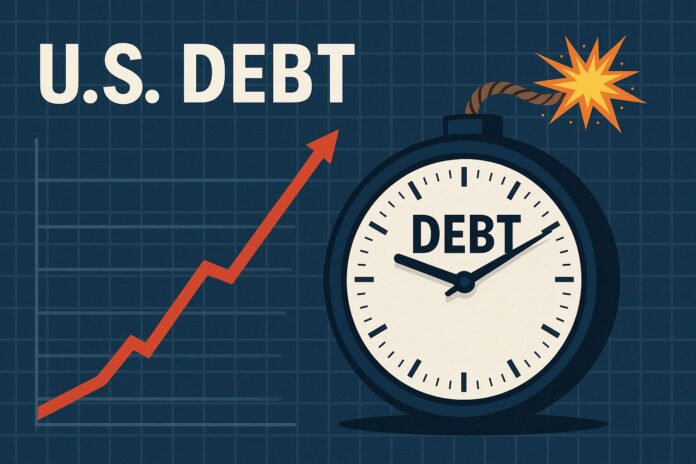The United States is sitting on a debt mountain that just crossed $35 trillion, and it’s growing by the second. Economists, policymakers, and global investors are now asking the same question: how long can the world’s largest economy keep borrowing without breaking?
A Fiscal Pressure Cooker
Washington’s spending habits have outpaced its income for decades, but the pace has accelerated since the pandemic. Record stimulus packages, rising interest costs, and expanding entitlement programs have pushed the nation’s debt-to-GDP ratio past 120%, a level not seen since World War II.
What makes today’s situation different is that interest rates are no longer near zero. The Federal Reserve’s fight against inflation has lifted borrowing costs to the highest point in more than two decades. As a result, the U.S. government is now spending over $1 trillion a year just on interest payments — more than it spends on national defense.
No Easy Way Out
Economists warn that if Congress continues to run trillion-dollar deficits, the debt could spiral into what some call a “fiscal doom loop.” Higher debt means higher interest payments, which means more borrowing — and the cycle feeds itself.
The pressure is intensified by an aging population. Social Security and Medicare, two of the largest federal programs, are absorbing a growing share of the budget as baby boomers retire. Without structural reform, these programs will drive spending even higher.
Meanwhile, political gridlock in Washington leaves little room for long-term solutions. Each debt ceiling standoff becomes a temporary patch on a growing wound.
The Global Stakes
For decades, the U.S. dollar has been the backbone of the global financial system — seen as the safest asset on Earth. But if investors start doubting America’s ability to control its debt, that confidence could weaken. Rising yields on Treasury bonds could shake global markets and push the U.S. economy toward slower growth or higher inflation.
What Comes Next
Experts agree that the debt problem is solvable — but it demands political courage that’s been missing in Washington. Real solutions include tax reform, spending discipline, and policies that expand economic growth.
Until then, America’s fiscal path looks unsustainable. The clock is ticking, and the world is watching.



